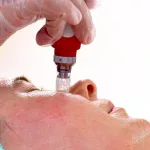You ever notice how something in your gut tells you there’s more going on in your area than the numbers show? Like, you’re walking through your neighborhood, maybe the local pharmacy suddenly looks busier, or your coworker can’t stop sniffing. You feel like something’s bubbling under the surface. Well, here’s the thing—it might literally be in the sewage. Yep, the water we flush away has been quietly dropping hints about the spread of diseases like SARS-CoV-2. Today, we’re diving into something you might never have considered: how COVID-19 wastewater surveillance is helping us predict infections, sometimes even before they show up in test numbers.
This isn’t some far-fetched science fiction plot—the idea came straight out of the chaos that was 2020. As the world scrambled to understand and track the pandemic, a bunch of smart folks starting thinking creatively. “What if,” they said, “the clue we need isn’t in hospitals but in the pipes?” At first glance, the premise sounds a bit…odd, maybe even gross. But stick with me here, because it’s way more interesting (and useful) than you’d expect. And the serious stuff? The future—like how we might use this method beyond just community COVID prediction—is worth wrapping your head around.
The Science Behind the Sewage
If I told you that a test using poop could give us a heads-up about surges in infections, you’d probably raise an eyebrow. But that’s exactly what’s happening with public health today. When someone carries the SARS-CoV-2 virus, even if they’re not showing symptoms, their body releases pieces of the virus’s genetic material into sewers through their, well…bathroom habits. So, tracking that can be like looking at a giant, underground early detection system for community infections.
Breaking Down the Basics
This kind of wastewater testing for COVID works by pulling samples of sewage from treatment plants, collecting traces of all the flushed-toilets in a town or city. The goal isn’t to figure out who’s infected—it’s about understanding trends. Are virus levels creeping up? That might mean case numbers are about to follow. But it’s not just about SARS-CoV-2. This process, often called wastewater-based epidemiology, has been used before (think polio surveillance), even though back then, nobody imagined we’d be using it quite this way or at this scale.
How It Compares to Traditional Methods
| Public Health Tool | Strengths | Weaknesses |
|---|---|---|
| Clinical Testing | Identifies who, where, and when specific individuals are infected | Relies on people taking tests and reporting them, bias toward symptomatic cases |
| Wastewater Surveillance | Covers the entire community anonymously, catches infections before symptoms | Can’t specify who is sick, limited in septic tank areas, influenced by weather and wastewater flow |
From Lab Curiosity to Public Health Game-Changer
Back before it was featured on CNN or integrated into CDC programs, wastewater surveillance was just one of those “Hey, maybe this could work?” moments. But by mid-2020, researchers at the University of Minnesota were thinking along those lines, testing how virus traces in sewage might line up with the rest of the data. What they found was promising—levels of virus in wastewater mirrored the actual rise and fall of infections people were reporting and the CDC took notice.
Here’s where that “aha moment” came. By the fall of 2020, they rolled out a national initiative—NWSS, which stood for National Wastewater Surveillance System. It was kinda like herding scientists and local officials to work together on a project that none of them had really done before. But guess what? It kept proving useful, particularly once the Omicron surge of 2021 hit. Wastewater caught that spike weeks ahead of people even getting confirmed test results, meaning public health teams could start planning ahead.
Real Stories From the Field
Let me explain it like a real-life example. In 2021, a mid-sized city was analyzing sewage data when something showed up—a surge in viral load where normal levels were expected. Instead of waiting for complaining customers calling doctor’s offices or urgent care clinics popping up, city officials began talking to hospitals, issuing updated reminders about masks, and boosting local vaccination efforts. Turned out, the Omicron wave started affecting folks right as predictions showed up. This wasn’t luck; it was physics and biology aligning like no other tool tried. And that’s what makes wastewater surveillance a standout—not just reacting to disease, but predicting community infections before they break wide open.
2022: An Early Warning System
By this time, many places realized wastewater analysis wasn’t just a pandemic-era stopgap. Communities ranging from California to Maine started taking wastewater seriously, particularly as surges got harder to manage. Think about how many people avoid testing because they don’t have symptoms. Clinical tests miss them—a blind spot wastewater doesn’t as the CDC and major institutions validated it.
So here’s the deal: outcomes align well. Areas where sewage levels dropped usually saw lower case numbers in the days that followed. Places with sudden spikes…well, now they had a fighting chance to prepare even if people hadn’t started lining up for tests yet. The approach worked so well that by 2023, they were improving these methods to go even beyond the pandemic—vetting other viruses like RSV and flu. Connected dots, if you will, of a more integrated and multi-pathogen tracking strategy that public health teams have been dreaming about for years.
Reasons to Be Optimistic… And Concerns We Can’t Ignore
Ok, it’s not all clear nights and easy sailing. This method’s got some kinks and some folks still scratch their heads.
For starters, getting levels right across the U.S. is a challenge. Half-decent measurements matter, but how that data’s collected fluctuates widely. Imagine everyone keeping a diary of their symptoms—but not everyone starts on the same day, tracks the same metrics, or even writes legibly. That’s kind of what happens with sewage data from various regions, especially between rural areas and densely populated cities. Waste infrastructure is just…different everywhere.
Understanding the Limits
Let me ask you—have you ever left home without flushing the toilet? (Maybe when you’re rushing out in the morning.) Well, viral load tracking worries about that, because these tools work best when the entire community shares their…output fairly evenly. Also, viruses in water break down temperature, time, and other chemical factors
mess things up, making us wonder if the levels we see are exactly reliable for predicting infections. And then? Standards. There’s no national manual saying “do this exact thing,” meaning it’s like everyone has their own recipe for a stew—some are savory, some are salty. That matters when you’re trying to compare numbers between two different cities.
A Technical Elephant in the Room
Sometimes, measuring the virus in wastewater gets tangled with “matrix interferences”—basically, leftover chemicals from soap, algae, or even food scraps mess with detection tools. Yeah, your dishwasher tabs or leftover spaghetti sauce affects how wastewater testing for coronavirus can be trusted. The good news is that researchers have been slowly overcoming these obstacles, building better models and filters to get usable viral tracking results for doctors and public health—without looking as rough as dishwater in a storm.
The Future is in the Pipes
So what now? The 2024s and beyond might see wastewater surveillance evolving into something we take for granted as more funding and coordination efforts unfold.
True story: some public health teams are already pairing sewage data with air monitoring and vaccination rates to spot an outbreak sneaking in. It’s like getting a forecast for how the storm of cases might build up. But people being people, testing and tracking isn’t easy. For example, areas with older pumping systems that don’t handle big surges might not reflect the same accurate trends as places with newer infrastructure. Some parts of the country rely on septic tanks instead of centralized sewers cutting off where they show up on sewage analytics.
A classic case was caught in Georgia when officials realized they were underrepresented, thanks to how their systems functioned compared to, say, New York’s sprawling pipes.
What It Challenges Us to Learn
But like anything significant, community pandemic tracking warns a lesson: trust in tools matters. We can’t expect our sewage networks to do it all. As much as wastewater samples help us see the shadow cast by the next outbreak, there’s still a need for individual testing and fully connected public health strategies. Data alone can’t prevent infection—it can just line things up for us so we know when to swing into action. Responsible communication keeps your suspicions in check, too. A spike? Infection predicted? You can’t just shut everything down because the numbers went up. But you can alert the community, limit the next surge, and protect people before the crisis even fully starts. That’s prevention at its finest.
And the Big Picture Ties Together
You see, wastewater surveillance’s magic isn’t that it’s always accurate—it’s the way it fills in the blanks. It’s not perfect but when teams use it right, season it with regular clinical data? It’s like adding onion to a stew—mild and not the star, but without it, you lose something important. That mix helps government and residents make smarter choices. And that’s huge. We can’t keep pretending health prediction is a guessing game when we’ve got tools that can guide us.
Staying Ahead as the Stakes Shift
Wait a second—don’t panic, it’s totally normal to feel a bit uncertain here. But the evidence keeps stacking up, and the response from our health institutions matches it. By 2023, many teams had linked community tracking to their early warning dashboards, including the CDC’s now 2025 interactive map showing real-time community-level virus trends. This visual tracking makes it more real—it’s not just numbers on paper anymore. (Check your area online here if you’re feeling curious.)
The Road Ahead Needs More Than Passion
But—and this part hurts a little—it’s not set in concrete. There are still heavy funding challenges lurking, especially as the world shifts away from persistent pandemic focus. Back in 2025, Boston scholars raised the alarm: “A financial cliff is coming.” If those funds dry up, we might lose what could be our best silent partner in disease prevention as explained by policy experts.
Why This Method Matters (Even If It’s a Bit Awkward)
You know, when the first people started reviewing this approach back in 2020, they laughed it off as a weird science project. But fast-forward—even skeptics now see how useful sewage analytics became, helping shape how our towns and cities deal with pandemic infections. It’s one of those “disrupted status quo” stories like when smartphones changed everything.
Except this is about toilets changing public health. And isn’t that impressive, in a weird way?
What We’re Gaining From It
Fewer surprises. More preparedness. Closer to the edge of forecasting instead of reacting. Wastewater surveillance isn’t glamorous, but it’s got muscle when we need it the most. Using this community infection prediction tool is like buying a great umbrella before a big storm—you might not see rain yet, but you’re not caught scrambling when it comes. And as more experts refine the details—like improving sequencing so SARS-CoV-2 in wastewater can show us specific variants—that umbrella becomes more waterproof than ever.
Final Thoughts: Trust the Process
So here’s the elevator pitch: checking sewage might not be your favorite topic of conversation. (Okay, it’s pretty far in the back of the line.) But if it gives us a few days’ warning that infections are rising—even before the neighbor cancels Friday movie night or your kid’s school texts parents—we’ve hit on something important.
Wastewater surveillance? Yeah, it’s been part of our toolkit since 2020 though it’s still finding its legs in some stretches. Let’s rethink the role of unconventional tools like this through a lens where we use them wisely, not perfectly. We did a real solid, tracking through this once-unthinkable epidemic—but when community-level surveillance works, let’s keep our confidence seeking ways to use it better.
Lick your phone screen after a taco night? Gross—but viral RNA tracking? That’s how you see things coming. And it doesn’t bite the hand, just helps us keep a cleaner one. (Jokes aside, hand washing still matters.)
What do you think about this method? Is it time to see plumbing as the new prevention? If so, share this and start talking about the possibilities. If not, feel free to shoot me thoughts—I’m always curious to hear where others are landing.


















Leave a Reply
You must be logged in to post a comment.